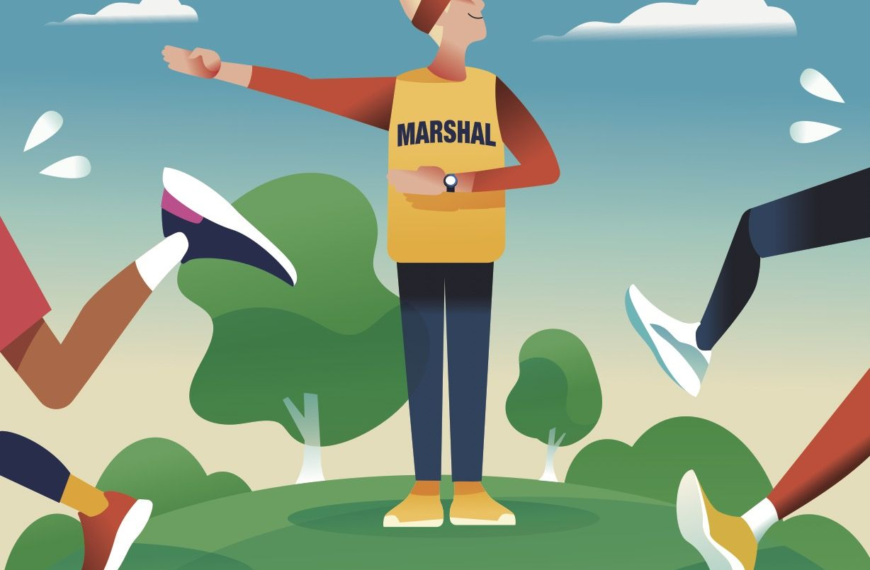1. Introduction
The Importance of Post-Race Recovery
After the thrill of crossing the finish line and celebrating your hard-earned victory, the real challenge begins: recovery. Post-race recovery is crucial for ensuring that your body heals properly, minimizes the risk of injury, and sets the stage for your next challenge. It’s not just about resting but also about strategic actions that help your muscles, joints, and overall system bounce back stronger. Proper recovery can also aid in preventing fatigue and burnout, enabling you to maintain a consistent and effective training routine.
What to Expect After a Race
The period following a race is often filled with mixed emotions and physical sensations. You might experience soreness, stiffness, or fatigue, which are all normal. The extent of these sensations can vary depending on factors such as the race distance, intensity, and your level of training. Being aware of what to expect can help you manage your recovery better and prepare you for the next phase of your running journey. Understanding the typical recovery timeline and recognizing the signs of overtraining will guide you in creating an effective recovery plan.
2. Immediate Post-Race Actions
Cool Down Exercises
Light Jogging or Walking
After you’ve crossed the finish line and caught your breath, it’s essential to cool down gradually. Light jogging or walking helps to lower your heart rate gradually and prevent blood from pooling in your legs. This gentle activity also aids in the removal of metabolic waste products from your muscles, reducing the likelihood of severe soreness. A short, easy jog or a brisk walk for about 5 to 10 minutes can be very beneficial.
Dynamic Stretching
Dynamic stretching involves moving parts of your body through their full range of motion. Unlike static stretching, which is best done after your muscles are warmed up, dynamic stretches can help in the post-race phase by maintaining flexibility and enhancing blood flow to your muscles. Simple movements like leg swings, arm circles, or torso twists can help in alleviating stiffness and preparing your muscles for the recovery process.
Rehydration and Nutrition
Importance of Electrolytes
During a race, especially in hot conditions, you lose not just water but also essential electrolytes such as sodium, potassium, and magnesium through sweat. Rehydrating with a drink that contains electrolytes can help replenish these lost minerals and maintain the balance necessary for proper muscle function and overall hydration. This can prevent issues like cramps and dehydration, which can linger if not addressed promptly.
Optimal Post-Race Snacks and Meals
Eating the right foods after a race is crucial for recovery. Opt for a combination of carbohydrates and protein to replenish your energy stores and aid in muscle repair. Good choices include a smoothie with fruit and yogurt, a sandwich with lean protein, or a balanced meal with grains, vegetables, and protein. Aim to eat within 30 minutes to an hour after finishing to maximize recovery benefits.
Mental Check-In
Reflecting on Your Performance
Post-race is also a time for mental recovery. Take a moment to reflect on your performance. Consider what went well and what could be improved. This reflection helps in setting realistic goals for future races and adjusting your training plan accordingly. It’s a valuable step in learning from each race experience, whether you’ve achieved your goal or faced unexpected challenges.
Celebrating Your Achievement
Don’t forget to celebrate your achievement, no matter how big or small. Completing a race is a significant accomplishment that deserves recognition. Whether it’s a personal best or just finishing the race, taking time to appreciate your hard work and dedication will boost your motivation and make the recovery process more enjoyable.
3. Rest and Recovery
Importance of Rest
Rest is a fundamental component of any effective training plan. After a race, your body needs time to repair and rebuild. Rest days help prevent overtraining and allow your muscles to recover from the stress of the race. It’s important to balance rest with gentle activity to avoid complete inactivity, which can lead to stiffness and reduced fitness.
Balancing Rest with Activity
Finding the right balance between rest and activity is crucial. While complete rest days are necessary, incorporating light activities like walking or gentle stretching can help keep your body active without placing undue stress on it. This approach aids in circulation and helps with the removal of metabolic waste, making your recovery more effective.
Sleep and Recovery
Tips for Improving Sleep Quality
Quality sleep is essential for recovery as it allows your body to repair muscles and restore energy levels. Aim for 7-9 hours of sleep per night, and create a restful environment by maintaining a consistent sleep schedule, reducing screen time before bed, and keeping your bedroom cool and dark. Good sleep hygiene will help you recover faster and prepare for future training sessions.
Active Recovery
Low-Impact Exercises (e.g., Swimming, Cycling)
Engaging in low-impact exercises can be a great way to promote recovery without putting additional strain on your body. Activities such as swimming or cycling provide cardiovascular benefits and help maintain fitness while being gentle on your joints. These exercises enhance blood flow and aid in the removal of lactic acid from your muscles, speeding up recovery.
Gentle Yoga or Stretching Routines
Incorporating gentle yoga or stretching into your recovery routine can help maintain flexibility and reduce muscle tightness. Yoga can also be beneficial for relaxation and mental recovery. Focus on poses and stretches that target the major muscle groups used during the race, and remember to move slowly and breathe deeply to maximize the benefits.
4. Addressing Common Post-Race Issues
Muscle Soreness and Stiffness
Foam Rolling and Massage Techniques
Muscle soreness and stiffness are common after a race. Using a foam roller or getting a massage can help alleviate these symptoms. Foam rolling works by applying pressure to tight areas, helping to release muscle knots and improve circulation. Professional massage can also target specific areas of tension and aid in quicker recovery.
Injury Prevention and Care
Identifying Early Signs of Injury
Be attentive to any unusual pain or discomfort that persists beyond the normal post-race soreness. Early signs of injury might include sharp or persistent pain, swelling, or bruising. If you notice these symptoms, it’s important to address them promptly to prevent further issues and ensure proper healing.
When to Seek Professional Help
If you’re experiencing significant pain or suspect an injury, seeking professional help is crucial. A sports therapist or physiotherapist can provide a thorough assessment and recommend appropriate treatment. Ignoring potential injuries can lead to more severe problems down the line, so it’s better to address them early.
Hydration and Nutrition
Maintaining Proper Hydration Levels
Continued hydration is important even after the race. Drink plenty of water throughout the recovery period to keep your body well-hydrated. Proper hydration supports muscle function and helps in flushing out toxins from your system. Monitoring the color of your urine can be a good indicator of your hydration levels.
Nutritional Needs for Recovery
Your body requires specific nutrients to recover effectively. Focus on a balanced diet rich in vitamins, minerals, and antioxidants. Foods like fruits, vegetables, lean proteins, and whole grains support muscle repair and overall recovery. Proper nutrition can also boost your immune system and prepare you for future training sessions.
5. Reflecting on Your Race Experience
Analyzing Performance
Reviewing Split Times and Overall Strategy
Post-race analysis involves reviewing your performance metrics, such as split times and overall strategy. This evaluation helps you understand what worked well and what didn’t during the race. Analyzing these details allows you to make informed adjustments to your training and racing strategies for future events.
Setting New Goals
Adjusting Training Plans Based on Race Experience
Based on your post-race analysis, set new goals that challenge you while being realistic. Adjust your training plans to address any weaknesses or areas for improvement identified during the race. This could involve changing your workout routines, incorporating new exercises, or focusing on specific aspects of your running technique.
Preparing for Future Races
Use the insights gained from your recent race to prepare for future events. Whether it’s refining your training, adjusting your race-day strategy, or setting new performance targets, a thoughtful approach will help you build on your experience and continue progressing as a runner.
6. Long-Term Considerations
Incorporating Recovery into Training
Scheduling Recovery Days
Incorporating scheduled recovery days into your training plan is essential for long-term success. Recovery days allow your body to rest and repair, preventing overtraining and burnout. Plan these days strategically around your more intense training sessions to ensure a balanced approach.
Preventing Burnout
Keeping Motivation High
To avoid burnout, it’s important to maintain high levels of motivation and enthusiasm. Set short-term goals, celebrate small victories, and vary your training routine to keep things interesting. Engaging in activities outside of running, like cross-training or social runs, can also help keep your motivation levels up.
Building a Sustainable Running Routine
Finding Balance Between Training and Rest
Developing a sustainable running routine involves finding a balance between intense training and adequate rest. Listen to your body and adjust your routine as needed to prevent overtraining and injuries. A well-rounded approach that includes varied workouts, rest, and recovery will help you achieve long-term success and enjoyment in running.
7. Conclusion About Running Post race day tips
Embracing the Recovery Process For Running Post
Embracing the recovery process is key to long-term running success. Recognize that recovery is not a passive phase but an active and essential part of your training. By taking care of your body and mind, you set the stage for future improvements and continued enjoyment in your running journey.
Looking Forward to the Next Challenge
With proper recovery, you’ll be ready to tackle your next running challenge with renewed energy and focus. Use the lessons learned from your recent race to fuel your preparation for future events, and keep pushing towards new goals with confidence and enthusiasm.
You Also Like It:
Best Running Tips on Running Post

















